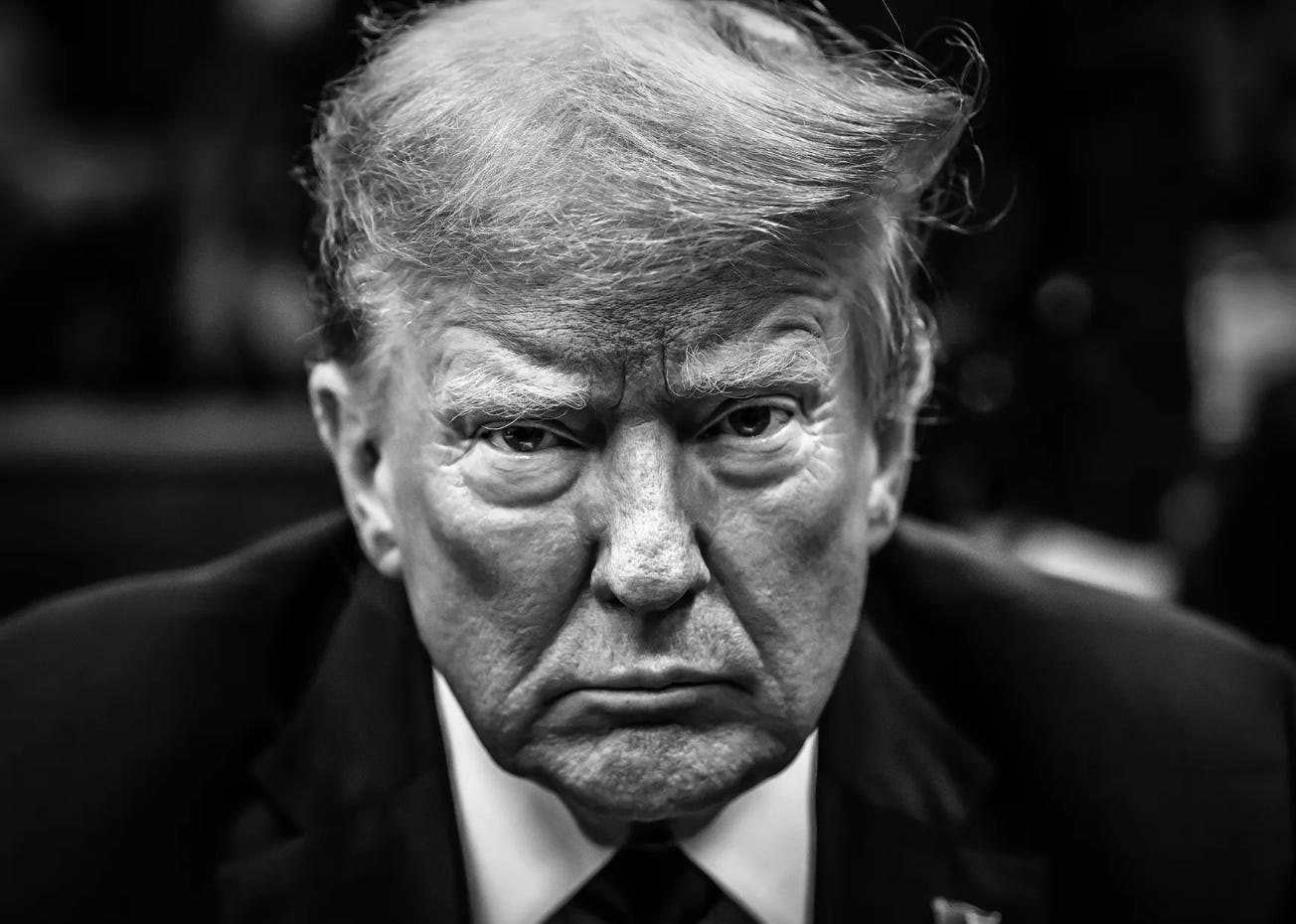THE UNNAMABLE SUBJECT OF SINGULARITY: TRUMP AS A POET
The hallucination does not obey the laws of language, either those of connection or of substitution, and it appears as being independent of the intersubjective game
Dear Readers,
Below, an older piece which I have updated with some reflections on Gaza.
As always, if you have the means and value writing that both enriches and disturbs, please consider becoming a paid subscriber.
In our pop-scientific culture, “singularity” refers to the idea that, by directly sharing my thoughts and experiences with others (a machine that reads my mental processes can also transpose them to another mind), a domain of globally shared mental experience will emerge that will function as a new form of divinity—my thoughts will be directly immersed in a global Thought of the universe itself. However, what if Singularity, if we imagine it as realized, will not be the immersion of individuals into a collective space, but rather an extremely solipsistic state where each self (reduced to a selfless flow of thoughts, no longer a Self opposed to others in an intersubjective space) functions similarly to the anonymous narrator of Samuel Beckett’s The Unnameable?
We read Beckett here with Jacques-Alain Miller, who, in his 2006–2007 seminar, describes the last years of Jacques Lacan’s teaching as preoccupied with an effort to delineate the contours of the One alone before the Other, of a hallucination before symbolic reality, of meaningless lapses prior to any signifying articulation.1 Lacan opposes two axes here. One is the axis of the symbolic Unconscious where, in transference, the subject relates to an Other, and where symptoms have a (supposed) meaning and, as such, await historicization—integrated into a symbolic narrative. The other is the axis of the real Unconscious, where the subject (or, rather, the subjectless Self) is all alone:
“Who is this self?—this self that knows that it has neither tail nor head, neither meaning nor interpretation. We have here an it that is not, as Lacan was able to play with it, the one of the unconscious, but an it that is a self.”2
“The pivot is that here, one considers the One-all-alone. At least two allusions from Lacan, in this text, find a way to be ordered from this all-alone. He says: ‘There is no friendship there, in that space that supports this unconscious.’ No friendship that can be the support of the unconscious.”3
“Friendship” stands here for the link from one to the other, between subjects but also between signifiers—signification arises only through such “friendship” where one signifier interprets the other.4 With the subjectless Self that is all alone, there is also speech, but this speech functions as pre-symbolic, erratic hallucination—a hallucination without law:
“The hallucination does not obey the laws of language, either those of connection or of substitution, and it appears as being independent of the intersubjective game.”5
So, again, on the one side we have the intersubjective game of transference, through which symptoms are decoded and historicized, integrated into the subject’s life story, while on the other side,
“we have a real cut off from speech, a real which ‘expects nothing from speech,’ and which ‘chatters all alone’ (cause tout seul). We know now to give its value to this all alone, which signals that we are not in history, in hysteria, in the one and the other, but, on the contrary, on the side of the solitary. Lacan even adds /that/ the real appears as a ‘noise in which one can hear anything and everything.’”6
This difference between speech as symptom pointing towards meaning, and speech as “chatter all alone”—composed of sinthoms which merely condense jouissance—does not overlap with the opposition between hysteria and psychosis; it divides the space of psychosis itself into paranoia (in which signifying mechanisms of retroaction are still operative) and schizophrenia, in which “the symbolic ceases making sense, making history, where the symbolic is at the level of the noise in which one can hear anything whatever. It is a collapse of the two dimensions: the symbolic founders on the real.”7 This is also why we are here in the domain of hallucinations: when the symbolic “founders on the real,” reality (by definition sustained by a gap that separates the symbolic from the real) disintegrates; the subject suffers a “loss of reality (Realitätsverlust).”
Keep reading with a 7-day free trial
Subscribe to ŽIŽEK GOADS AND PRODS to keep reading this post and get 7 days of free access to the full post archives.


